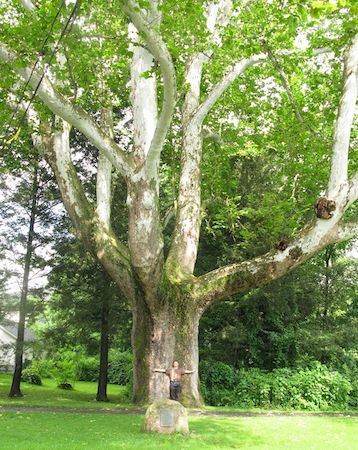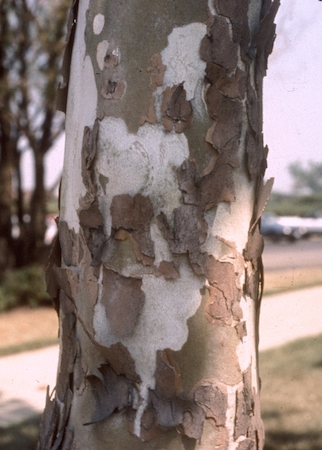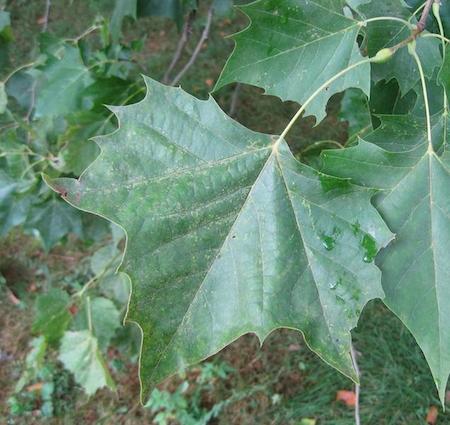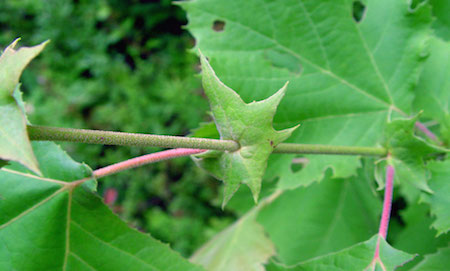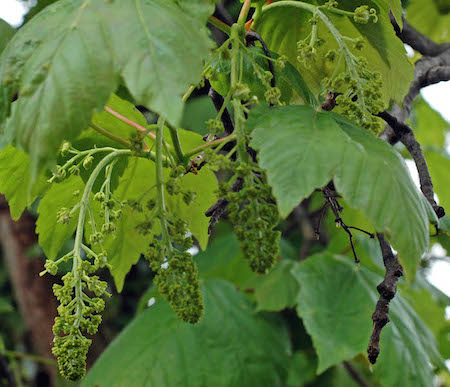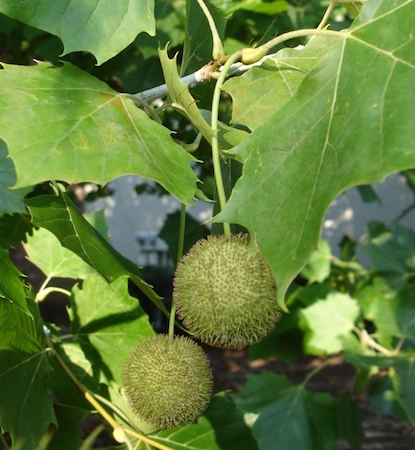Sycamore
Specifications
- Also known as: American Sycamore
- Latin (scientific) name: Platanus occidentalis. Occidentalis is Latin for “western,” referring to the western hemisphere.
- Life expectancy: 300 years
- Height: 129 feet
- Circumference: 17.1 feet (2021)
-
The height and circumference measurements listed here are for the largest-known sycamore tree in Atlanta. This tree is located on private property near Trader Joe's in Atlanta.
-
Special characteristics:
This is one of the two largest broad-leafed trees in the United States (the other is the tulip tree). Sycamore trees have seed balls which are soft and don’t hurt if you step on them. The tree loves moist areas. You know you are near water when you a see a group of sycamores.
The sycamore has a smoothe, polished trunk and branch wood, except in areas where the bark peels off in thin scales with irregular patterns. Then you see a multi-colored bark of gray, various shades of pale tan, and a striking bleached bright white. After a while, the trunk and all of the upper branches become a bare-bone white color. When you run your hand over this white surface, your hand appears to be covered in talcum powder.
The sycamore tree really shows itself off in the winter. The branches seem to light up when its big leaves fall. This is the only trees sporting branches with such high contrast. Look at this tree when the sky is clear and the sun is shining. It's truly beautiful.
-
Annoyance factors:
Here’s a little known fact which is common knowledge among tree workers. Every summer the sycamore tree develops fine dust on the underside of its leaves. This dust is a respiratory irritant. Some people just cough a little, while others might progress to violent vomiting after a terrible bout of coughing. How did this family of trees get named? If they were speaking phonetically, the people who named it got it entirely correct: sick-a-more.
-
Fun Facts:
Notice the bract in the pictures above. A bract is a part of a plant that may resemble a leaf or a petal. Structurally, a bract is most similar to a leaf, but it usually is slightly different from the plant's leaves. Some bracts are green while others are colored. Colored bracts can be quite brightly colored and are often mistaken for petals.
Bracts can be many shapes, sizes, and textures. They can be larger or smaller than the leaves and petals, and they are generally tougher. Their main function is to protect the flower from pests and harsh weather. When a flower first blooms, it is surrounded by the thick, green bracts. Some plants have two bracts while others have several. The flower blooms and grows out of the bracts, which remain on the plant and form the base of the flower. (from www.wisegeek.com)
Along with chimneys, of course, sycamores have been observed to be a favorite home of chimney swifts, which like to nest in hollow areas of these trees.
-
Photo Credits:
Tree: Patty Jenkins, TreeInspection.com
Bark: Richard Webb, Bugwood.org
Leaf: Rob Routledge, Sault College, Bugwood.org
Bract (specialized leaf): Chris Evans, Illinois Wildlife Action Plan, Bugwood.org
Flowers: Theresagreen.wordpress.com
Fruit: Allen Bridgman, South Carolina Department of Natural Resources, Bugwood.org

